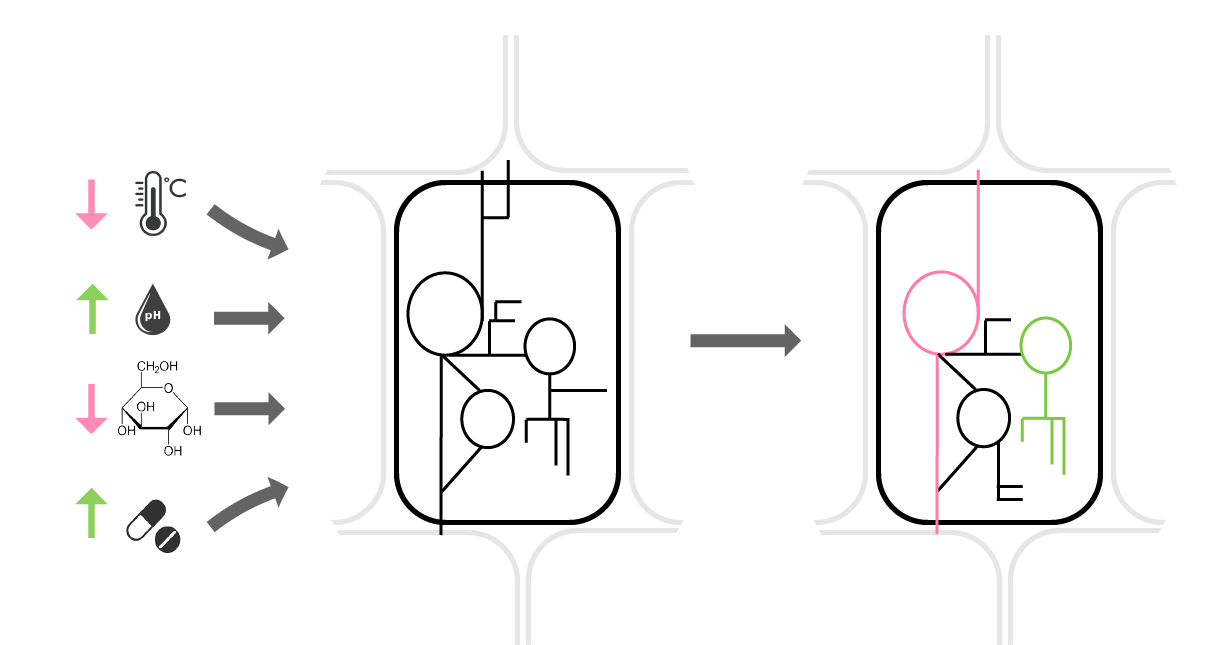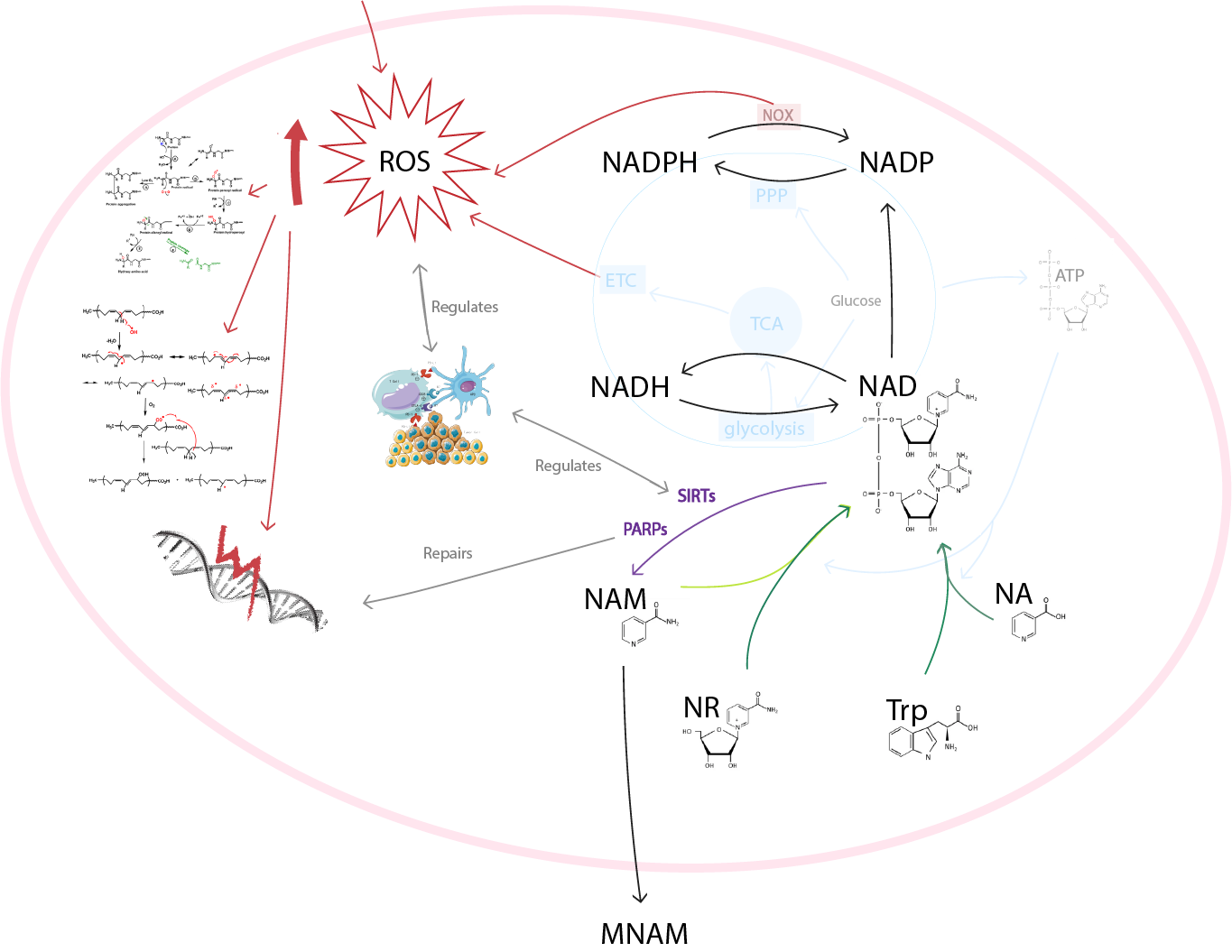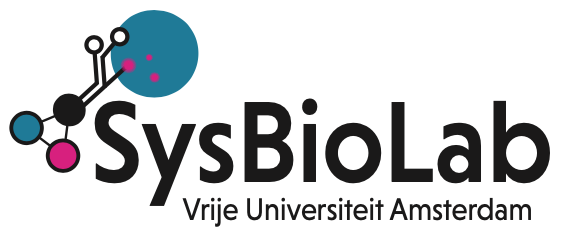Daniëlle Gramsbergen
d.s.gramsbergen@vu.nl

How do differences in the environment translate to changes in cell metabolism? What does this do to cell physiology both instantaneously and on an evolutionary scale? Answering these questions by combining mathematical models and wet lab experiments has been of great interest to me the past few years.
My previous projects have been about modelling growth coupled production in cyanobacteria and explaining overflow metabolism in yeast combining course grained metabolic models and physiology experiments. The focus of my phD project is bringing more of this systems biology approach to mammalian cells.

For this phD project we are investigating the link between oxidative stress and NAD metabolism in human hepatic cell lines, combining kinetic metabolic models with metabolomics and cell physiology wet lab experiments. NAD is most famous for its role as redox factor, playing an important part in central carbon metabolism. However, it also serves as a substrate for enzymes involved in DNA repair and immune regulation, like sirtuins and PARPs (poly ADP-ribose polymerases). Imbalance of NAD, especially deficiency, had been linked to several pathogenic outcomes, many of them with underlying oxidative stress on cells. Administration of NAD precursors had been proposed to remedy the negative effects associated with NAD depletion, with varying success. The aim of this project is to gain a more fundamental understanding of the metabolic changes cells undergo in response to oxidative stress and investigate novel intervention strategies.
Lab news
- Our take on the practical aspects of genome-scale modeling
- Our research featured in Quanta Magazine
- Herwig to lead €5M NWO Perspective Grant Consortium for plant-based fermentations
- We wrote a paper for a special issue celebrating the 50th anniversary of Metabolic Control Analysis
- New paper: Genome content predicts the metabolic preferences of bacteria
Recent Posts
- Our take on the practical aspects of genome-scale modeling
- Our research featured in Quanta Magazine
- Herwig to lead €5M NWO Perspective Grant Consortium for plant-based fermentations
- We wrote a paper for a special issue celebrating the 50th anniversary of Metabolic Control Analysis
- New paper: Genome content predicts the metabolic preferences of bacteria
Archives
- February 2024
- January 2024
- November 2023
- September 2023
- August 2023
- July 2023
- June 2023
- May 2023
- April 2023
- March 2023
- February 2023
- December 2022
- November 2022
- May 2022
- April 2022
- March 2022
- February 2022
- September 2021
- May 2021
- April 2021
- December 2020
- October 2020
- September 2020
- May 2020
- February 2020
- December 2019
- November 2019
- September 2019
- August 2019
- July 2019
- June 2019
- May 2019
- April 2019
- February 2019
- November 2018
- October 2018
- June 2018
- May 2018
- March 2018
- February 2018
- January 2018
- November 2017
- October 2017
- August 2017
- July 2017
- June 2017
- May 2017
- April 2017
- March 2017
- January 2017
- December 2016
- September 2016
- August 2016
- July 2016
- June 2016
- May 2016
- April 2016
- March 2016
- February 2016
- January 2016
- December 2015
- November 2015
- September 2015
- July 2015
- April 2015


Recent Comments